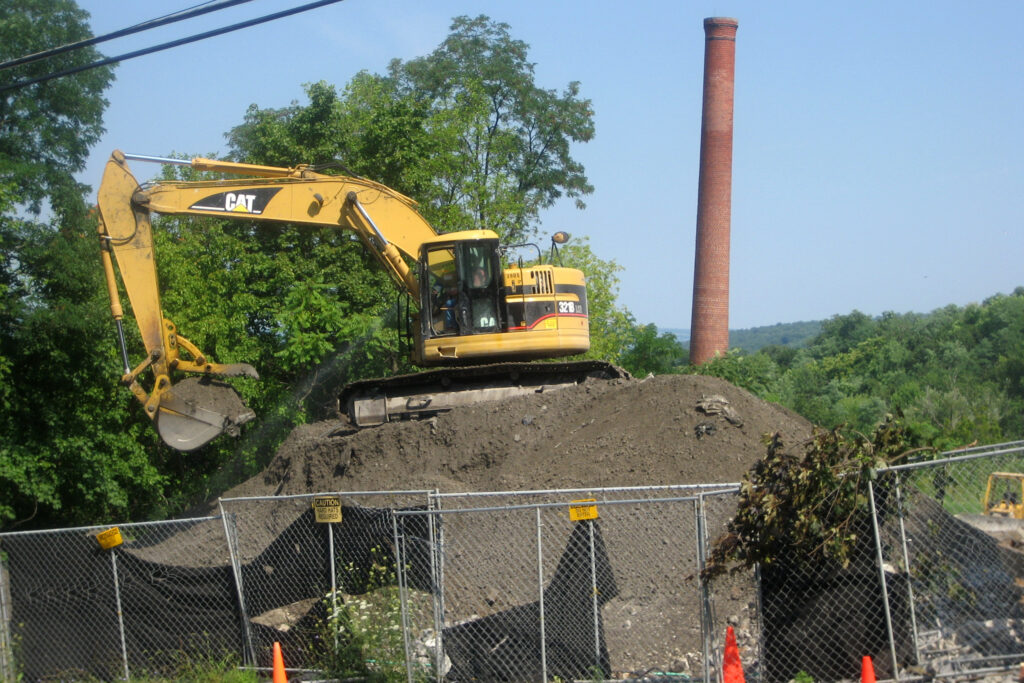ITHACA, N.Y.—On the ice, life made sense.
Kindra Bell has played ice hockey in Ithaca since she was a kid and later, as a freshman, her team brought home the Ivy League Championship for Cornell University.
But her diagnosis, well, that didn’t make any sense to her at all.
Bell was diagnosed with Parkinson’s disease in March 2016 at the age of 46, young for this type of diagnosis.
For years, she has lived down the hill from the former Ithaca Gun Factory, a long-abandoned brownfield site poised for redevelopment that’s contaminated with trichloroethylene, or TCE, a known human carcinogen that’s been linked to an increased risk of Parkinson’s disease, among other chemicals.
Toxic gasses may be rising into Bell’s home from below, potentially caused or exacerbated by a TCE plume that’s migrated from this site. This phenomenon is called vapor intrusion, which occurs when chemicals from the soil and groundwater evaporate and enter buildings through cracks and gaps in the foundation or floor.
The details of what happened on May 28, 2014 were a little fuzzy for Bell. She sat at her dining room table in Ithaca, New York, her hand slightly shaking, as she recalled the day she received a letter from the New York State Department of Environmental Conservation.
The letter said that after one round of sampling, officials detected TCE at 12 micrograms per cubic meter underneath Bell’s home and in the basement—six-times the current New York State Department of Health’s indoor and outdoor air guidelines. Nevertheless, the letter continued, the state did not believe the chemical would impact her or her family.
So, no one came back to install a sub-slab depressurization system, a common mitigation system for vapor intrusion.
More than a decade later, Bell is calling for all of the former industrial properties that are part of the state’s brownfield cleanup program, which encourages the redevelopment of places known or suspected to be contaminated by legacy pollution, to be cleaned to a higher standard to protect public health.
She and other environmental activists charge that the work at these sites, including the former Ithaca Gun Factory, is decades overdue and blames inaction by New York State Gov. Kathy Hochul and lax enforcement by the DEC, the agency that oversees the state’s brownfield program.
The former Ithaca Gun Factory is one of 777 brownfield sites in the state with known TCE contamination that haven’t been cleaned up to date, according to public records.
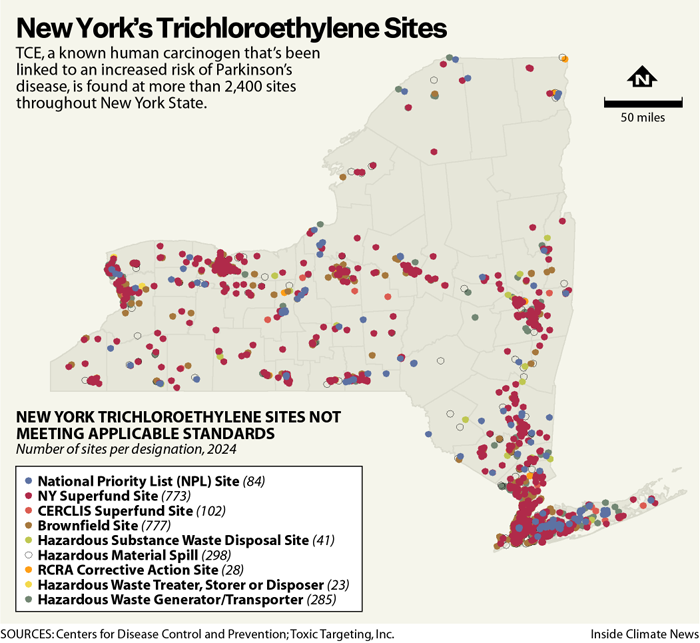
Bell is working with Walter Hang, a former environmental lobbyist who now works with communities and businesses to identify polluted sites through his Ithaca-based company, Toxics Targeting, to overhaul the state brownfields program that’s been around for more than two decades.
Hang said the sites aren’t being redeveloped safely, and that the program is a “get out of jail free card” for developers.
Contamination remains underneath Bell’s home and at the former Ithaca Gun Factory, where for more than a century, the company manufactured firearms and munitions in a hillside factory near Cornell University and the city’s downtown, using TCE to degrease metals.
TCE is still used this way in many states, despite its risks. The chemical has been known since the 1970s to cause kidney and other forms of cancer, as well as cardiac birth defects, according to the CDC. More recently, studies have shown a link between TCE exposure and an increased risk of Parkinson’s, a brain disorder that gradually leads to tremors, loss of balance, and difficulty walking.
Parkinson’s takes years, sometimes decades, to develop after exposure, said Dr. Ray Dorsey, a neurology professor at the University of Rochester Medical Center who studies the link between TCE exposure and the disease.
In 2008, Bell moved into her home with her husband and two sons. The dining room table became a place where meals were shared, stories were told, and family vacations were planned.
Now, around this same table, conversations sound a little different. Parkinson’s has caused Bell’s speech to become slightly slurred and quiet.
During the COVID-19 pandemic, Bell, who was working as a lab technician with her alma mater Cornell University, read the book Dorsey co-authored called “Ending Parkinson’s Disease.” She started connecting the dots between her exposure to TCE and Parkinson’s.
“I just thought if they [the state agencies] say it’s okay, it’s okay, and never thought anything of it until a couple of years later when I was diagnosed,” she said. “It kind of came back in my mind and I thought, ‘Oh, I wonder if this has anything to do with that testing they did.’”
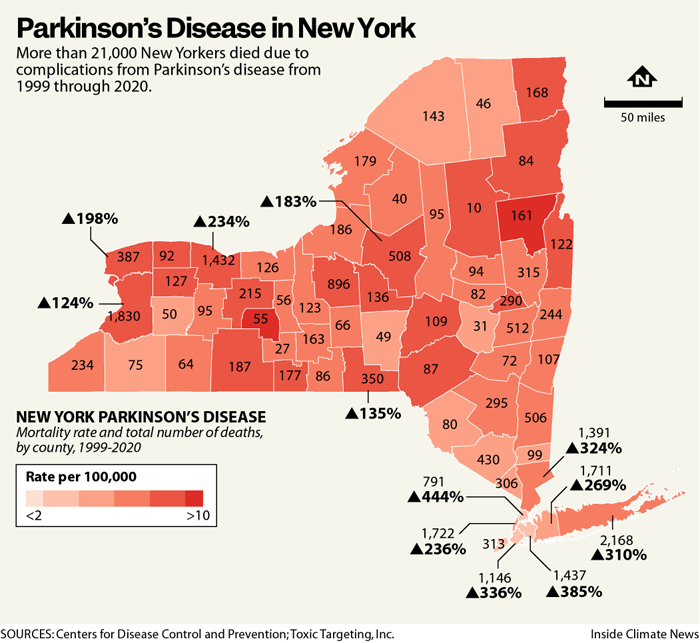
Bell is one of more than 65,000 New Yorkers living with Parkinson’s. A bill that would establish a statewide Parkinson’s research registry passed both houses this year and has been sent to Gov. Hochul to sign or veto. If enacted into law, New York would join 12 other states to help better understand the fastest growing neurodegenerative disease in the country.
Toxics Targeting launched in June a New York Parkinson’s Prevention Campaign calling on Gov. Hochul to adequately clean up the thousands of sites throughout the state that are contaminated with TCE. Hang said the campaign’s goal is to help investigate whether people diagnosed with Parkinson’s have been exposed to the chemical that may have caused or contributed to their disorder.
Scientists don’t know what causes Parkinson’s, but most cases of the disease are likely due to a combination of genetic factors and environmental exposures.
Dorsey said nearly everyone has been exposed to small amounts of TCE in many household products, including carpet cleaners and spot removers. The chemical can also be found in the drinking water of more than 19 million Americans, according to researchers at the Environmental Working Group.
In most cases, people will not notice a smell or be aware of their exposure to this chemical, making it difficult to detect, he said.
Prolonged or repeated exposure to TCE is associated with an increased risk for kidney and liver cancers and damage to the immune, central nervous, and reproductive systems. Short-term impacts are known to be relatively mild, limited to headaches, eye irritation, and some confusion.
There is no cure for Parkinson’s, no way to detect the disease early, and no way to reverse its damage to the brain, so it has to be prevented, Hang said.
Bell has no known relatives who have been diagnosed with Parkinson’s and has not knowingly experienced TCE exposures on the job or elsewhere. She believes she may have increased her risk for the disease by breathing the air inside her home, contaminated by the plume emanating from the former Ithaca Gun Factory uphill from where she lives.
Before they tested her home in 2014, the state concluded that the brownfield site posed a “significant threat to human health.” Officials found higher-than-average levels of TCE there and in other nearby areas where they had access to collect samples. Property owners can voluntarily give the DEC permission to test for soil vapor intrusion – and can decline testing – so, without access to all of the properties suspected of being contaminated with TCE there’s no way of knowing the full scope of the contamination.
But officials knew enough about the extent of the contamination to test Bell’s home, located in the known TCE plume, and determined there wasn’t a problem. When she received the test results, they were difficult to interpret without help from an engineer or lab technician. So, in 2022, she worked together with Hang, who she met in the early 2000s while playing on a hockey team, to learn more. The information brought her to tears.
In July, the DEC and DOH reviewed Bell’s sampling results from more than a decade ago and identified a transcription error on the form they shared with her. Officials determined that TCE was found at 12 micrograms per cubic meter – only beneath her home, not in the indoor air – and will not conduct further sampling or install any mitigation system, a decision Hang said is “irresponsible.”
“Nothing the agencies say in this matter should be trusted by the public,” he said. “The agencies have admitted their own incompetence.”
This story is funded by readers like you.
Our nonprofit newsroom provides award-winning climate coverage free of charge and advertising. We rely on donations from readers like you to keep going. Please donate now to support our work.
Hang believes the state should install a new concrete foundation with a sub-slab depressurization system in her basement.
A sub-slab depressurization system is the least expensive and quickest way to remediate vapors in the soil and groundwater before it enters a building. The system acts like a straw: It sucks up rising gasses beneath a building and blows them outside where they can dissipate into the atmosphere. But it’s not a perfect fix.
Building modifications, as well as power, water, and sewer lines can leave gaps where contaminants can seep through indoors, said Brian Schumacher, the division director of the EPA’s Environmental Sciences Division. He and John Zimmerman co-authored a 2012 EPA report on measuring soil vapor intrusion.
Pressure changes caused by rain or snowfall can also cause toxic vapors to enter a building, added Zimmerman, a supervisory physical scientist with the EPA.
In Bell’s case, her house was built in 1890 and there are cracks and holes in the stone that lines her partial dirt floor basement.
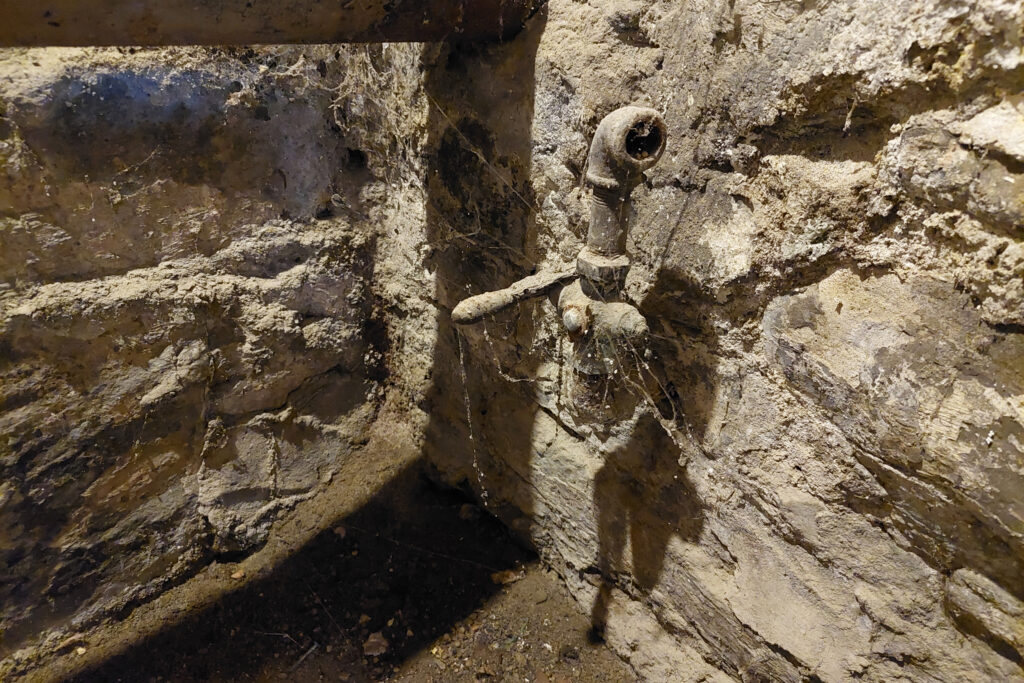
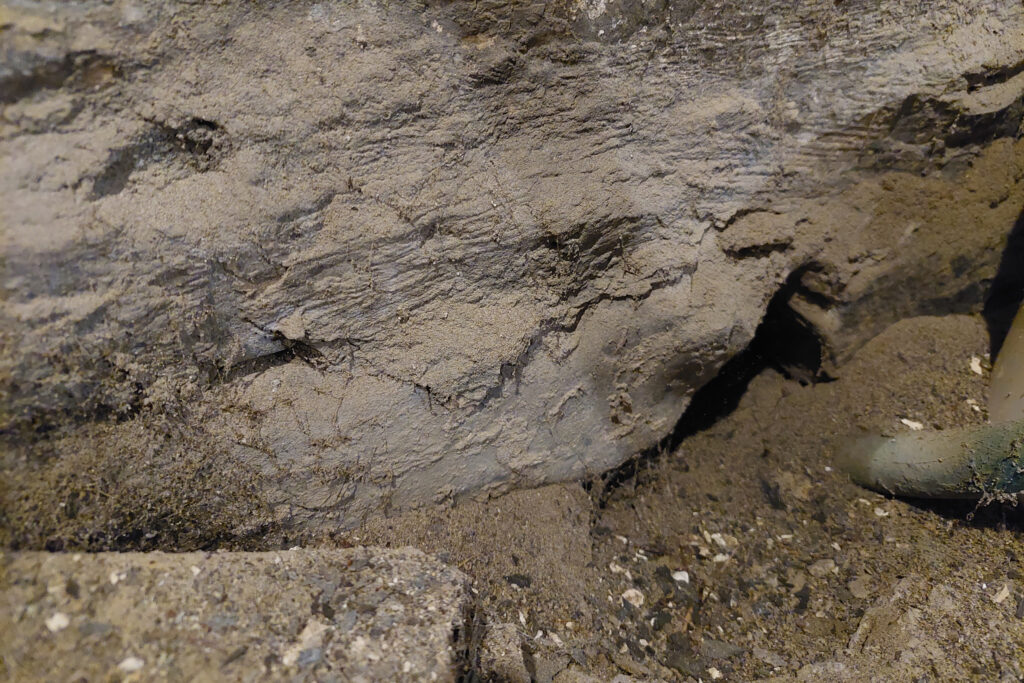
In 2014, state officials detected high levels of TCE in Kindra Bell’s 19th-century basement.
TCE contamination is not specific to Ithaca. It’s found throughout New York State and the country. But Dorsey said exposure to TCE is avoidable. New York and Minnesota signed bills that banned certain uses of TCE in 2020, and last year, the EPA proposed a ban on future uses of the chemical after the agency determined that in 52 of the 54 ways in which it’s used as a product presents an “unreasonably high risk of injury to health or the environment.” Still, the EPA acknowledged that as much as 250 million pounds of the chemical are still produced or imported into the country annually, with much of that ending up in the water.
The American Chemistry Council, a trade association representing the chemical industry, wrote in a statement to Inside Climate News that it opposed the ban on TCE. It maintains that TCE has several important uses, including in packaging and as a solvent, “where small amounts are used.”
Michal Freedhoff, the head of the EPA’s Office of Chemical Safety and Pollution Prevention, said in a statement last October that ending the use of TCE would prevent future pollution. “For far too long, TCE has left a toxic legacy in communities across America,” Freedhoff said.
Since 2013, the former Ithaca Gun Factory site has languished despite plans by developers to repurpose the 1.63-acre property. All that remains of the company’s existence in the city is a smokestack that can be seen above the city’s iconic Ithaca Falls.
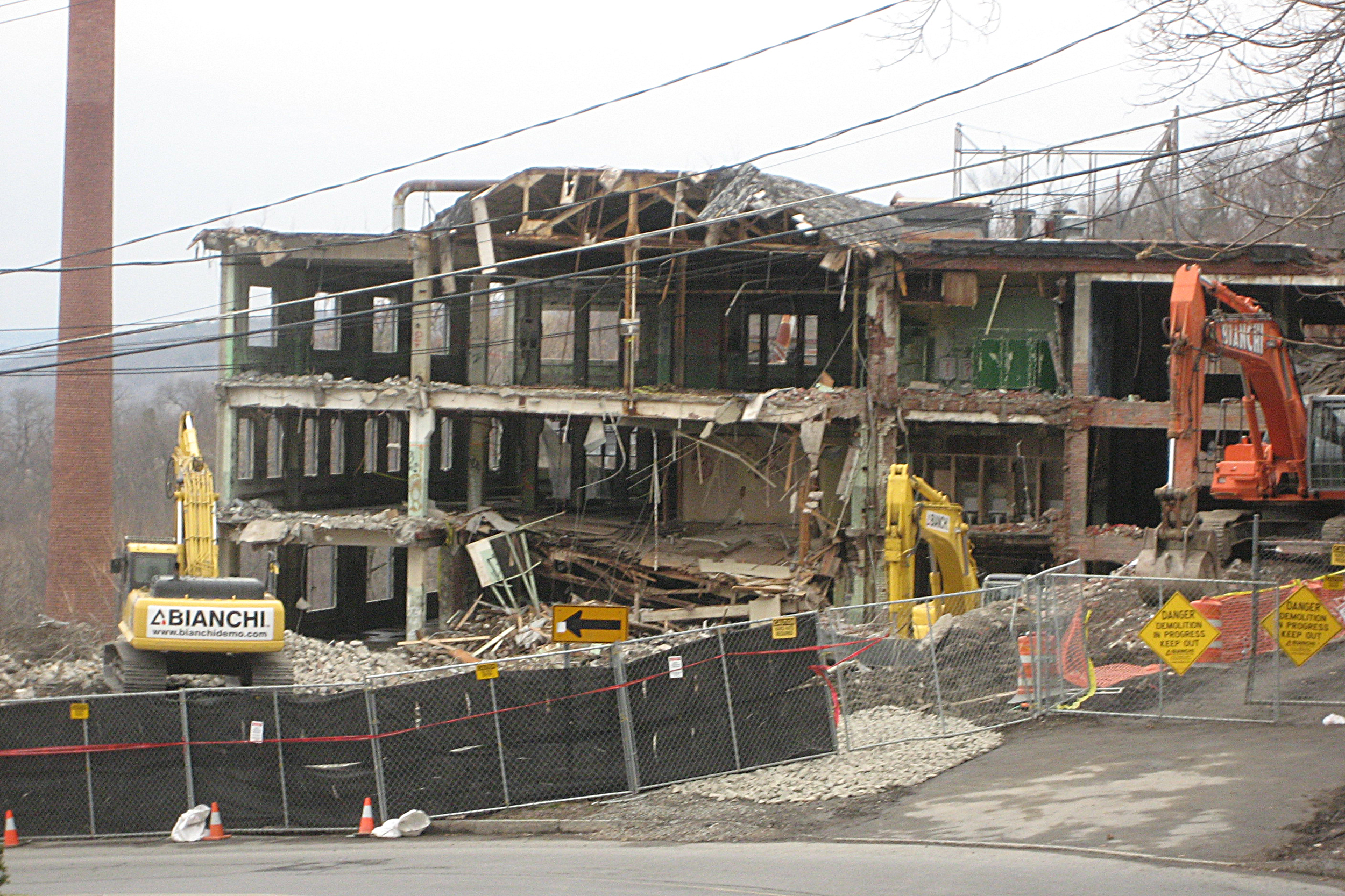
Now, New York City-based developer Visum Development Group plans to succeed where those efforts failed by building apartments on a portion of the site.
The land was purchased by 121-125 Lake Street LLC, an affiliate of Visum, as a brownfield site in 2021 and the company has since removed the soil contaminated with TCE and other chemicals.
No structures have been built on the site yet, but high levels of TCE remain there in the groundwater.
Julia Bucher, a company spokesperson, said groundwater cleanup will begin once they start construction. She added that the land where the smokestack stands from the former factory will not be part of the development and the contamination there will be cleaned up by the state.
Townhomes will also be built next to the former Ithaca Gun Factory site, where the state found TCE in the soil vapor (the air between soil particles) at low levels in all but one spot on the property a few feet northeast from where DMG Investments plans to build. There they identified the chemical at 130 micrograms per cubic meter.
Hang said it’s important to quickly catch TCE contamination because delays may allow the chemicals to migrate into soil and water supplies off site.
Despite several clean-up efforts over the years, Hang, a vocal opponent of the project, said during a March planning and development board meeting in Ithaca that contamination remains a problem. He believes it could spread to the townhomes, as well as the nearby neighborhood.
In response to concerns by Hang and others, DMG Investments said construction won’t stir up the known contaminated soil in that corner of the site and that the company will take precautions to limit any potential contamination.
“An environmental consultant will be overseeing the day-to-day soil disturbing operations from the first day of construction activity [2025] until soil disturbance is complete,” wrote Cian Hamill, DMG’a vice president of acquisitions and development, in an email. “The work area will be under their supervisory control and only those with permitted access will be allowed onto the site.”
The development, approved by the city in May, is expected to complete construction in 2026.
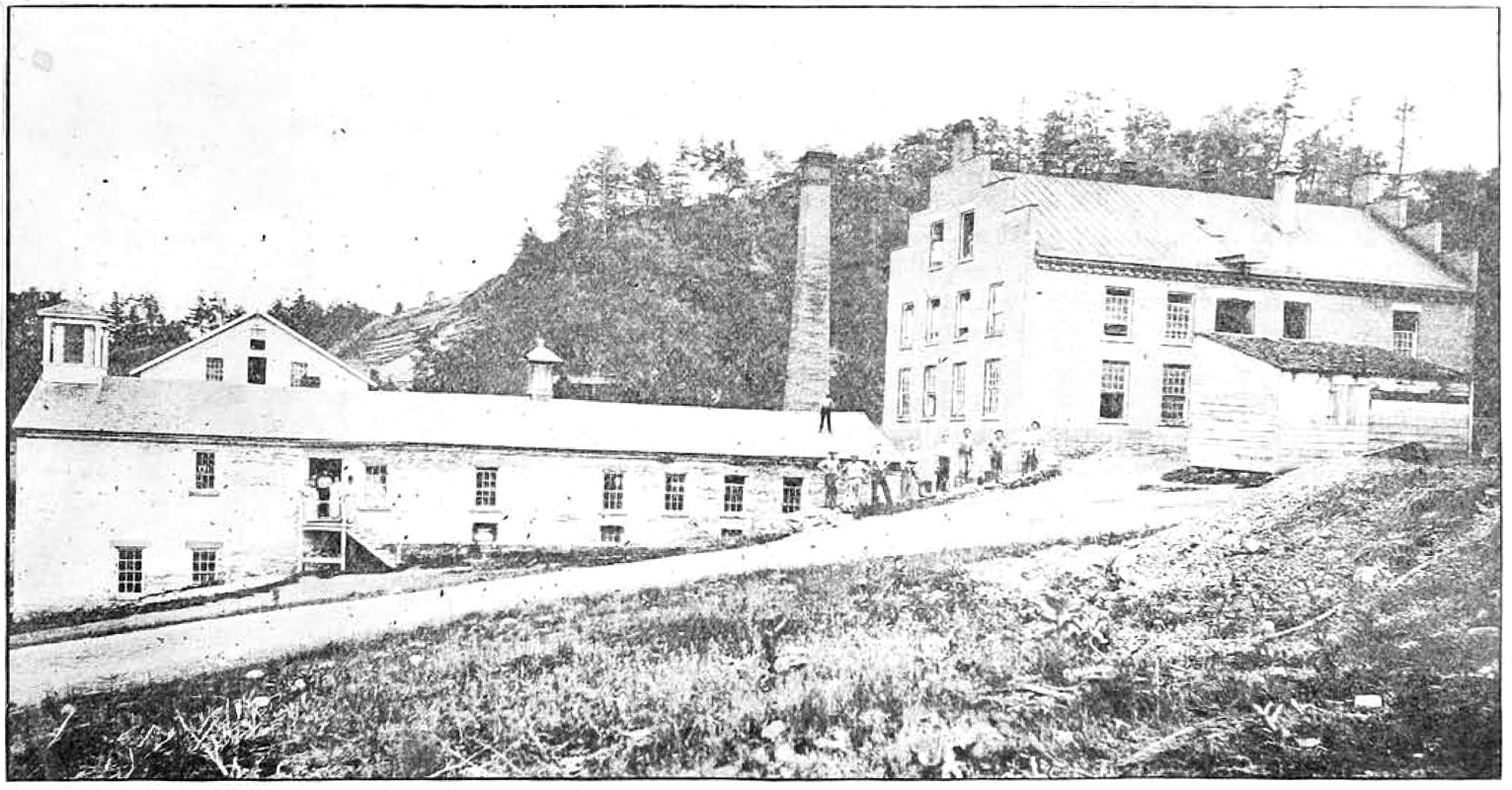
Downhill from the former Ithaca Gun Factory site, Bell sat at her dining room table and wondered what it’ll take for state officials to listen to her and test her home again. The state says it has no plans to clean up the documented pollution on her property.
In the meantime, Bell, now 54, said she’ll continue to play hockey with a team called The Furies, made of a group of women who span multiple generations. She pointed to a hockey stick propped against a wall – a reminder that even though she’s had to dramatically rethink her future, the disease hasn’t kept her off the ice.
“I’m committed to living the best life that I can with the disease, hoping that we can prevent thousands of other people from going through the same thing that I’m going through,” Bell said.
The project was produced in partnership with the McGraw Center for Business Journalism at the Newmark Graduate School of Journalism in New York.
Jordan Gass-Pooré is an award-winning independent podcast producer and investigative journalist based in New York City. Currently, Gass-Pooré is the creator and host of Hazard NJ, a limited-series podcast about the impacts of climate change on hazardous Superfund sites in New Jersey. This podcast is in collaboration with NJ Spotlight News/NJ PBS.
About This Story
Perhaps you noticed: This story, like all the news we publish, is free to read. That’s because Inside Climate News is a 501c3 nonprofit organization. We do not charge a subscription fee, lock our news behind a paywall, or clutter our website with ads. We make our news on climate and the environment freely available to you and anyone who wants it.
That’s not all. We also share our news for free with scores of other media organizations around the country. Many of them can’t afford to do environmental journalism of their own. We’ve built bureaus from coast to coast to report local stories, collaborate with local newsrooms and co-publish articles so that this vital work is shared as widely as possible.
Two of us launched ICN in 2007. Six years later we earned a Pulitzer Prize for National Reporting, and now we run the oldest and largest dedicated climate newsroom in the nation. We tell the story in all its complexity. We hold polluters accountable. We expose environmental injustice. We debunk misinformation. We scrutinize solutions and inspire action.
Donations from readers like you fund every aspect of what we do. If you don’t already, will you support our ongoing work, our reporting on the biggest crisis facing our planet, and help us reach even more readers in more places?
Please take a moment to make a tax-deductible donation. Every one of them makes a difference.
Thank you,
This news item came from: https://insideclimatenews.org/news/22072024/ithaca-new-york-tce-parkinsons-disease/

